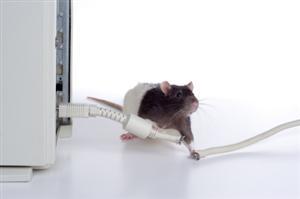Hypothesis
Rats prefer to chew on telephone and PVC wires.
Overview
Rat nuisance
Rats can be a nuisance in many ways. They enter homes in search of food and shelter and in the process, damage our food and furniture. However, one of the biggest problem caused by rats is when they chew out the electrical wiring in our homes. The damages caused by the rats can be very expensive and sometimes lead to fires and a loss of lives!.
Rats have very sharp teeth that grow continuously. This teeth can even cut through soft metals. This is the reason why it is better to use stainless steel conduits instead of plastic conduits for our wires and cables. Rats also cause problems by biting the electrical wiring in cars, trucks and trailers. The damage can sometimes be very difficult to locate, resulting in large repair bills!.
Among the things we can do to prevent rats from entering our homes, are to cover any holes larger that 10mm. We should also clear away things that attract them to our homes such as stacked wood or thick foliage. Leaving food outdoors will attract rats and should be avoided.
Scientific Terms
Electrical wiring, appliance wiring, stainless steel conduits, plastic conduits, coaxial cables, 3 core wires
Conclusion
The hypothesis that rats prefer to bite telephone and PVC wires is proven to be true.
A large percentage of fires in buildings in the USA are believed to be caused by rodents like rats, mice and squirrels. Because their teeth are constantly growing, rats need to chew constantly. When rats chew on power cables and expose the copper cores, they risk electrocution. The sparks emitted can ignite a fire if there are any flammable materials in the vicinity.
Also consider
Would your results differ if this science fair project were to be repeated using different types of animals like mice or squirrels?
The science project can be repeated with different types of wires – eg Teflon coated wires.
References
How to stop rats from chewing house wiring - http://www.ehow.com/how_5712971_stop-rats-chewing-house-wiring.html
Rodents and fires - http://www.homeinspectionsbyjerrykellyiii.com/RodentsFires.html
Related videos
Hey there! Here are some awesome videos about this science project that we think you'll really like. They're not only super fun, but they'll also help you learn more about the science behind the project. So sit back, relax, and get ready to have some fun!!

